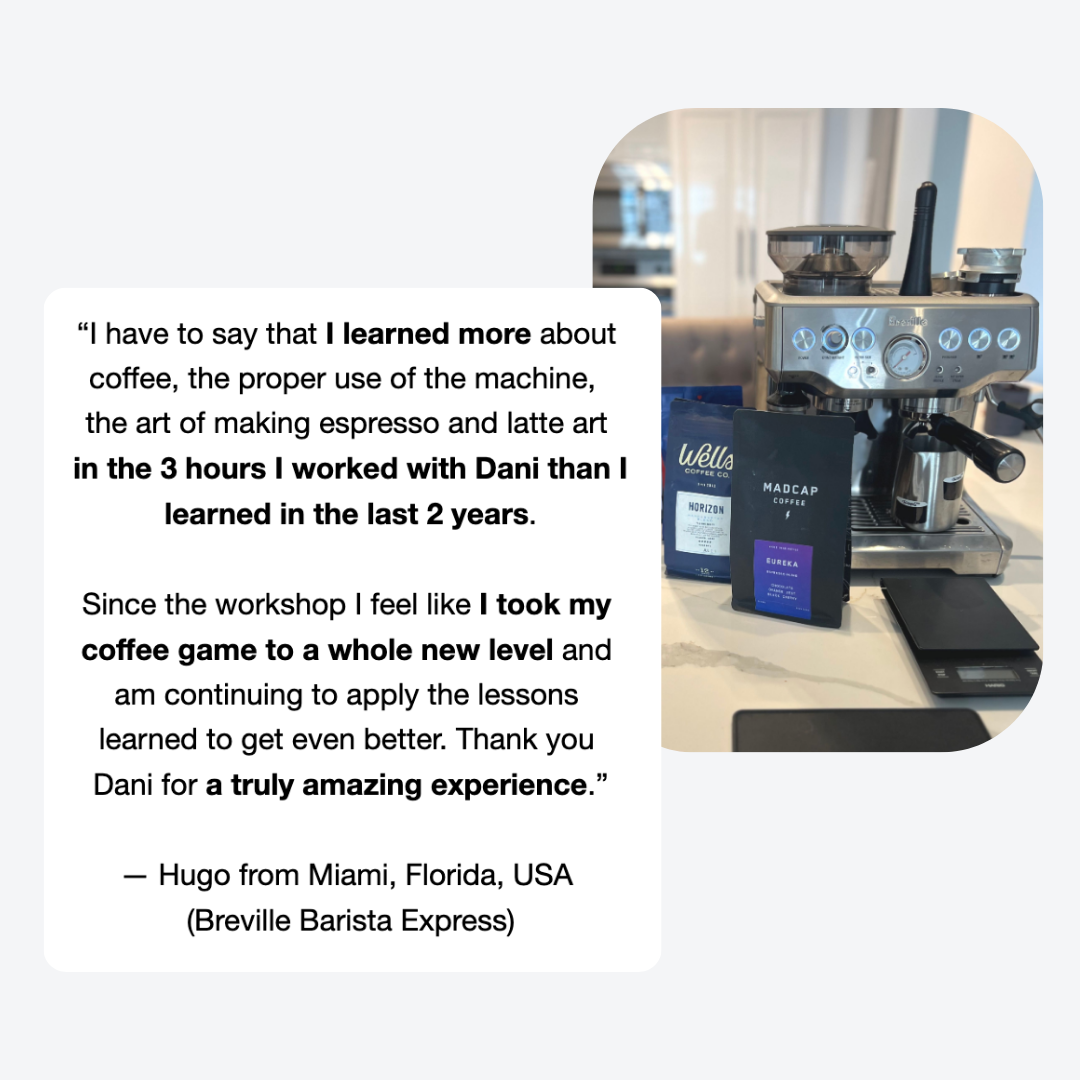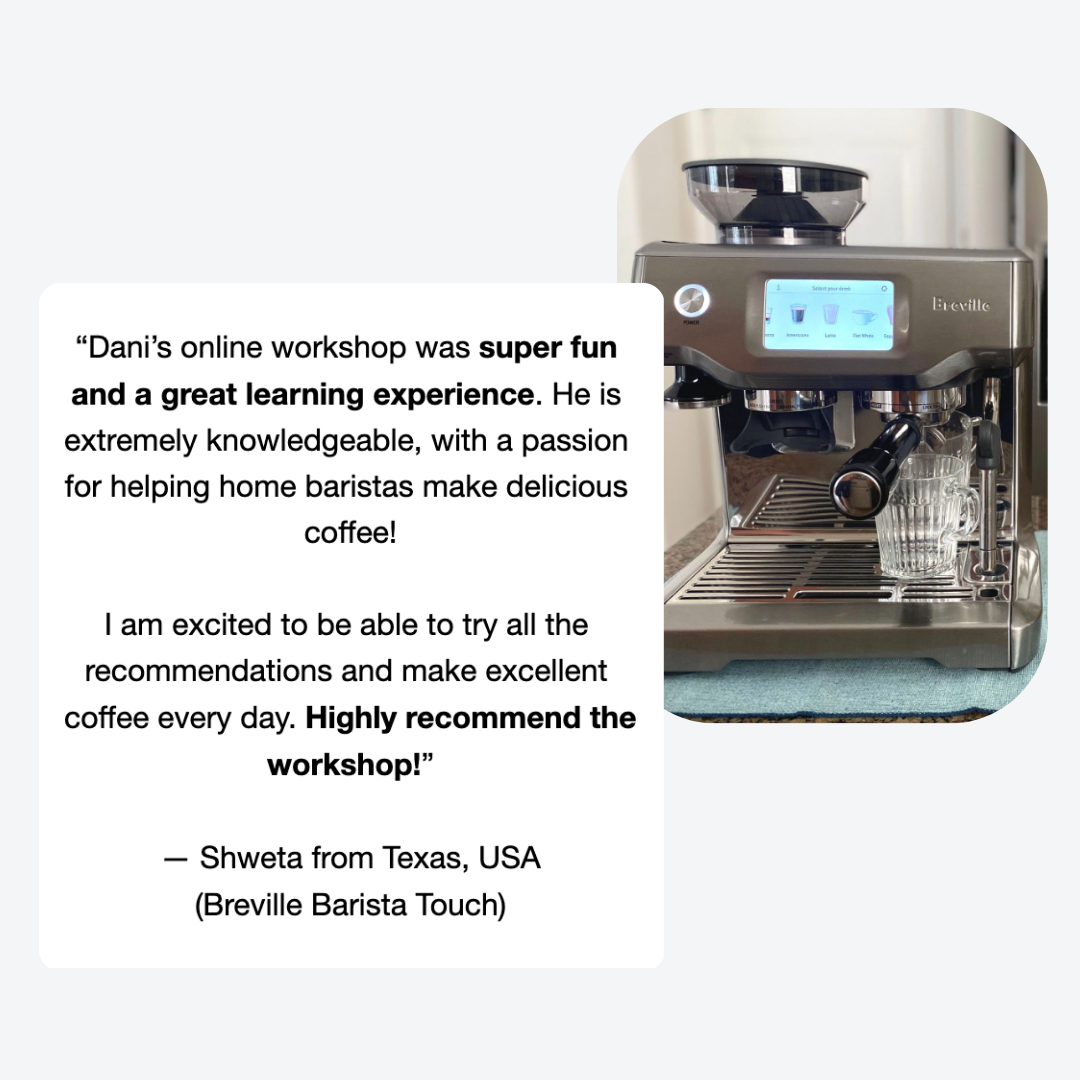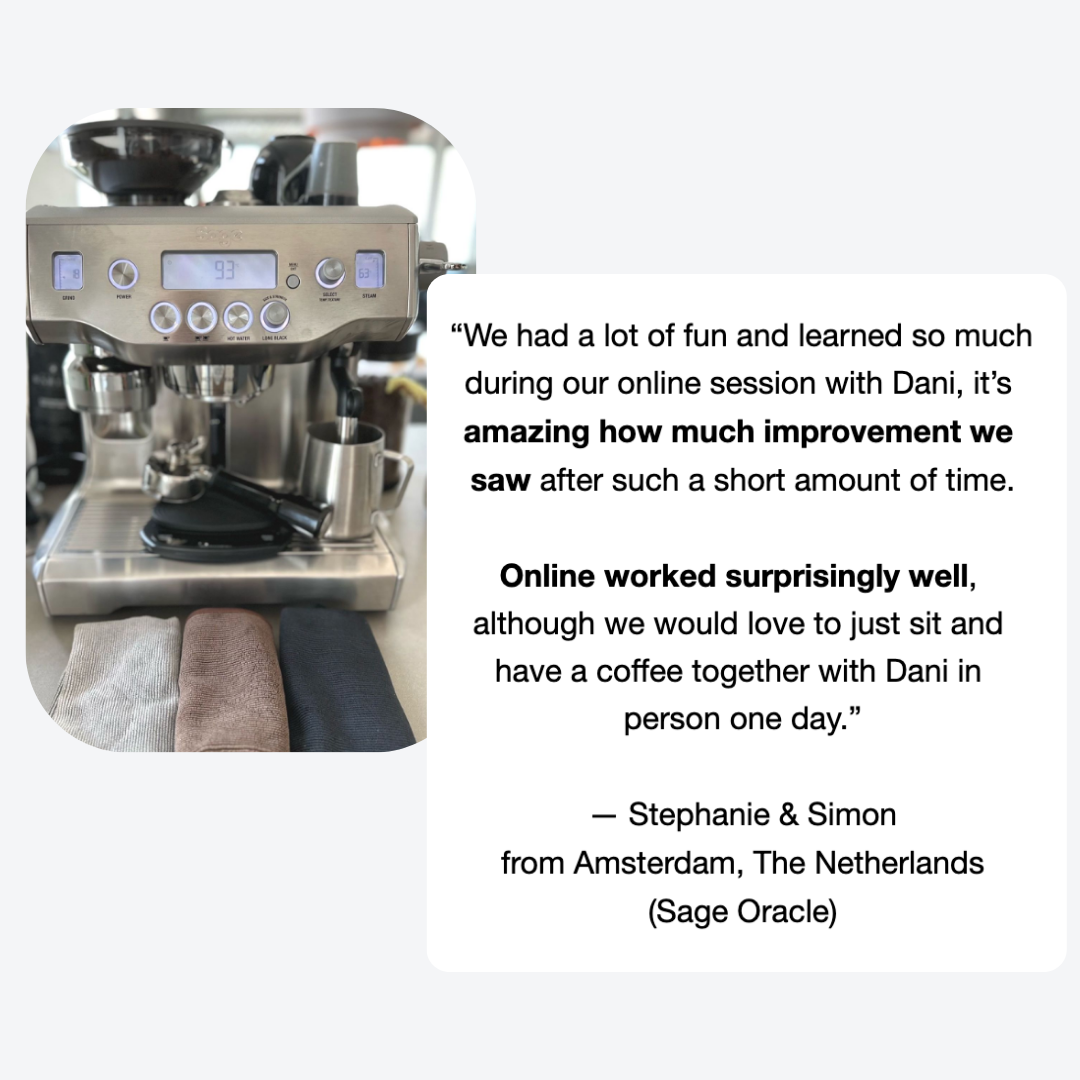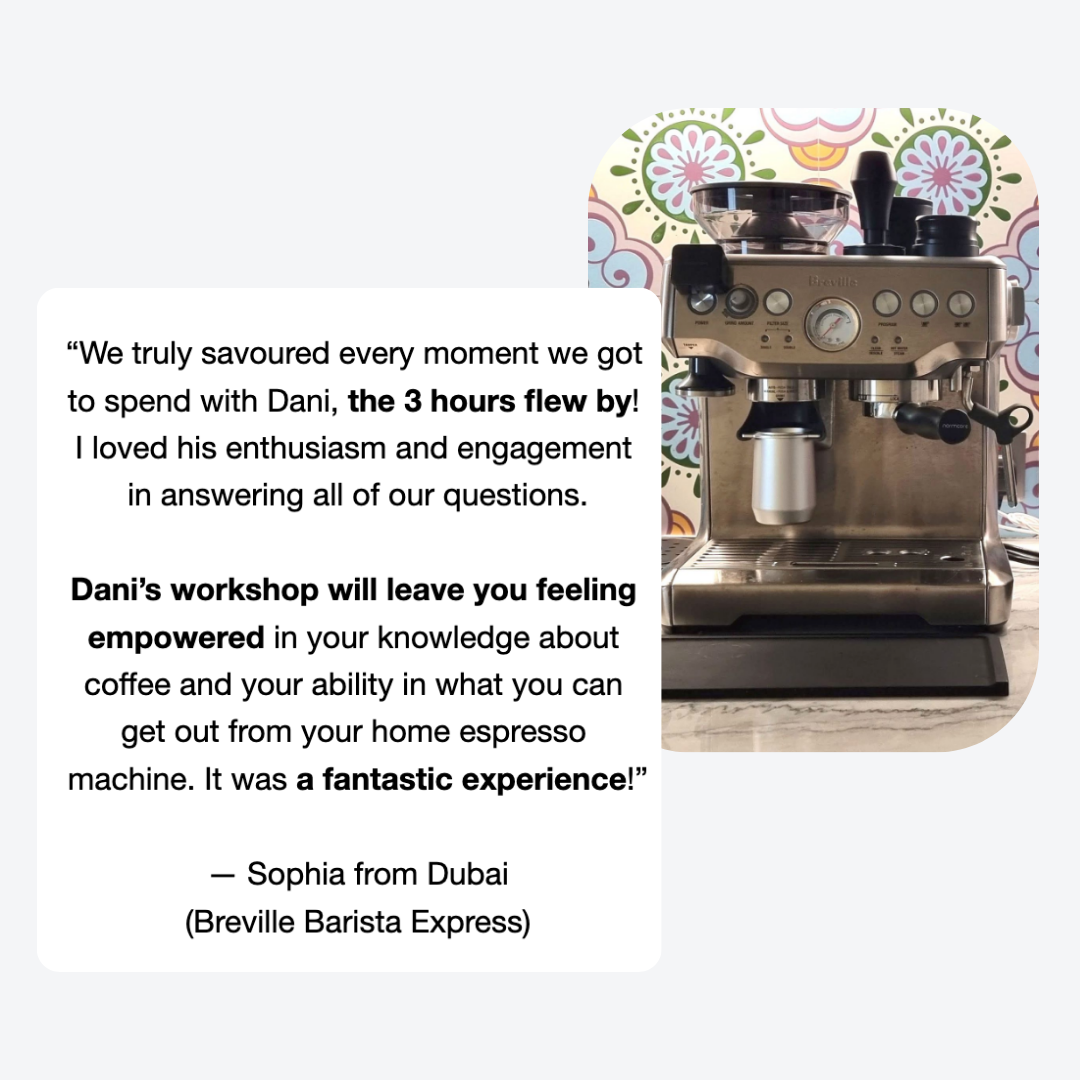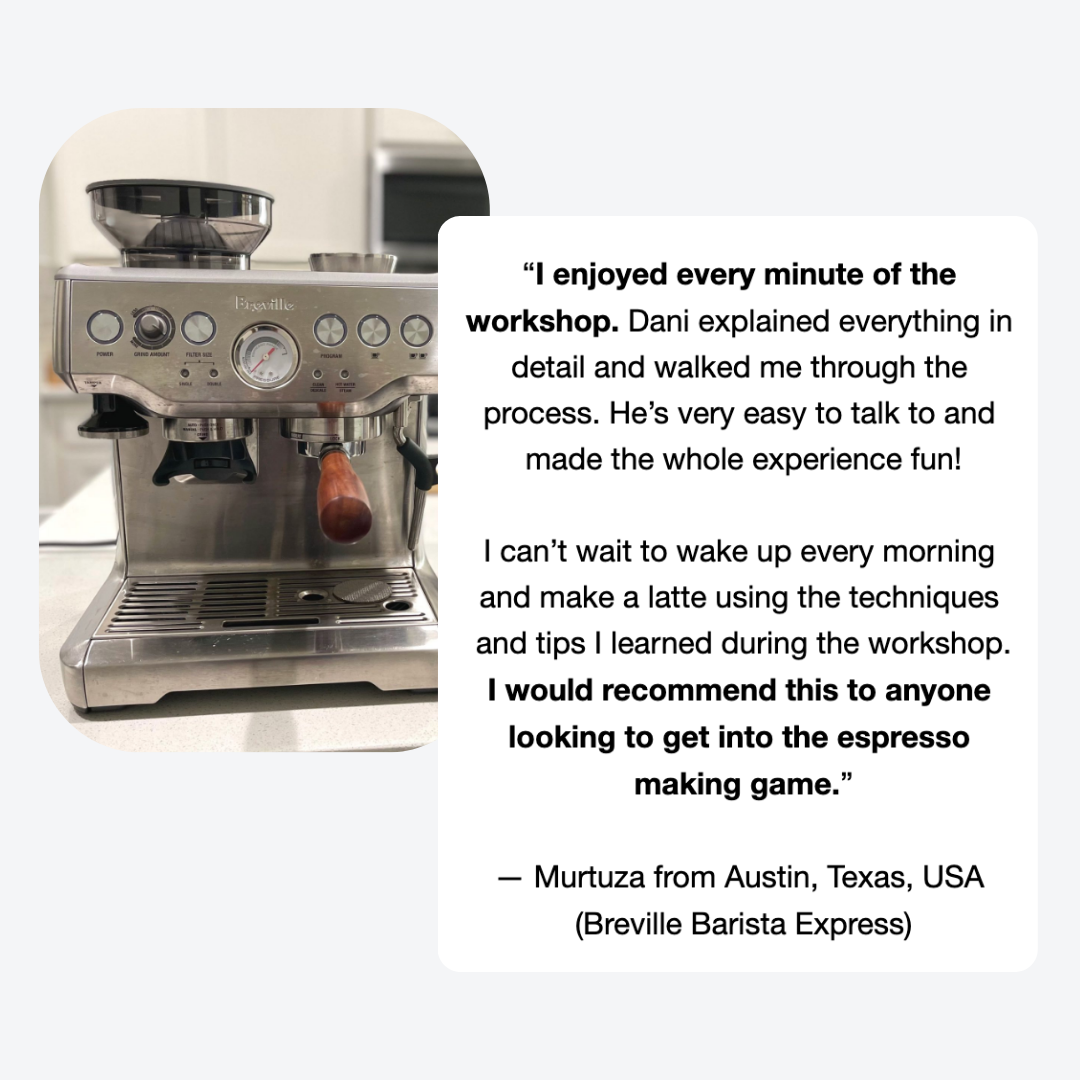The benefits of using a scale when making espresso at home
A must-have accessory for every home barista
One of the things I strongly recommend to home baristas, especially if they are at the beginning of their journey in making espresso at home, is to invest in a coffee scale.
The benefits of using a scale when making espresso at home
I can see why the thought of using a scale when making espresso at home might feel a little intimidating or maybe over the top. But, I promise you, it’s actually not that difficult and absolutely worth it! Contrary to what one might think at first glance, using a scale not only makes the process of dialing in espresso at home easier, but your coffee will taste better too.
A coffee scale allows you to be:
precise – for example, small variations of just a few grams in the amount of coffee beans you’re using might not look like much, but can actually have a significant impact on your espresso in both a pleasant and unpleasant way
consistent – by measuring exact amounts of ground coffee and liquid espresso, you’ll be able to replicate the same great tasting espresso recipe every single time, no hit-and-miss shots
efficient and reduce waste – by maintaining a go-to recipe, you won’t have to deal with unnecessary grind size changes or throwing away coffee which hasn’t come out properly
I encourage you to use a coffee scale even more so if you enjoy switching roasters and trying different coffee beans regularly. Since they will be of different harvesting countries, processing methods and roasting styles, dialing in new coffees will require different recipes.
And, even if you do prefer sticking to the same coffee beans at all times, which is absolutely fine too, your espresso will still require small adjustments every now and then, especially when the coffee beans are not as fresh anymore. Using a scale is a great way to do a quick check and make sure you’re still on the right track.
What do you measure with a coffee scale?
Dose, the amount of ground coffee you are placing in the filter basket
Yield, the amount of liquid espresso to be extracted in the cup
What to look for in a coffee scale?
When looking to buy a scale for your espresso machine, I suggest taking into consideration the following aspects:
Make sure the scale is wide enough to comfortably fit the portafilter sitting on it, but also of a small enough size that it fits your equipment, namely between the drip tray of your espresso machine and the portafilter
Ideally, the scale not only has weight measurement, but also a timer for tracking espresso extraction time
I’d always go for a rechargeable scale. This is an opportunity to be sustainable and skip the single-use batteries. Nowadays there are numerous options on the market, at different price points and many of them have a USB-C or mini-USB port for recharging.
A nice-to-have, but the scale is either waterproof or has a rubber cover on top. That’s making it anti-slip and protects the scale from accidental spilling.
Some of the coffee scales I recommend
There’s many brands of coffee scales out there, some premium, some on the more affordable side. From the latter, I have personal experience with and can recommend either of these two:
Coffee scale by Barista Essentials, the coupon code DANI10 will grant you 10% off on your first order
Coffee scale by TIMEMORE
I hope you find these tips helpful and, if you’d like to dive deeper, you may consider our espresso and latte art home barista workshops. Happy brewing!



